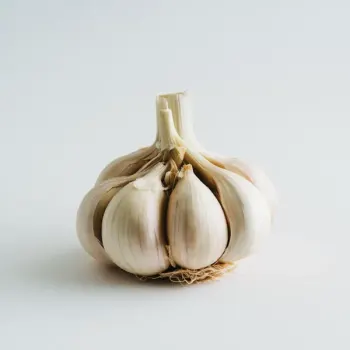Garlic and shallots are aromatic ingredients used in cooking to add depth and flavor. Garlic has a strong, spicy taste, while shallots are milder and sweeter, making them suitable for different dishes depending on the desired flavor profile.

Garlic, the pungent and spicy member of the Allium family, is a foundational ingredient used globally to create robust and savory flavors in a multitude of dishes.

Shallots, with their subtle sweetness and hint of sharpness, offer a milder, more refined taste than garlic, making them ideal for delicate sauces and dressings.
Garlic is known for its strong, spicy flavor that mellows and sweetens upon cooking, while shallots offer a more gentle, sweet, and complex flavor profile with a hint of garlic. The texture of garlic is firmer, often forming a paste when minced, and its cloves are larger compared to the finer, more tender texture of shallots. Garlic is used worldwide, whereas shallots are a staple in French and Southeast Asian cuisines.

Your ultimate Recipe Box, Meal Planner, and Cooking Class all in one
Garlic infuses oils with its distinct flavor, perfect for sautéing vegetables or starting off a stir-fry. Use it to create a strong base note in dishes like Aglio e Olio pasta or garlic bread. Shallots soften faster than garlic and are ideal for a quick sauté, lending a mild, sophisticated flavor to dishes like sautéed mushrooms or spinach.
Garlic adds a bold kick to dressings and sauces such as Caesar dressing or chimichurri, where its raw, intense flavor can stand out or meld harmoniously when emulsified with other ingredients. Shallots, finely minced, are perfect for delicate vinaigrettes or béarnaise sauce, as they integrate well without overpowering the harmony of flavors.
Whole or crushed garlic cloves become sweet and caramelized when roasted, ideal for accompanying meats like roast chicken or mixed with root vegetables. Roasted shallots turn soft and jammy, adding a layer of sweetness that complements roasted beef tenderloin or can be used as a base for gravy.
Both garlic and shallots are low in calories and rich in nutrients, including vitamin B6, vitamin C, and manganese.
| Nutrient | Garlic ( per 100 grams ) | Shallots ( per 100 grams ) |
|---|---|---|
| Fat | 0.5g | 0.1g |
| Sodium | 17mg | 12mg |
| Calcium | 181mg | 37mg |
| Protein | 6.3g | 2.5g |
| Calories | 149 | 72 |
| Carbohydrates | 33g | 16.8g |
Yes, shallots can be substituted for garlic to achieve a milder flavor, but you may need to adjust the quantity to taste due to their different strengths.
While they can be substituted for each other in some recipes, they are not entirely interchangeable due to their different flavor profiles and intensities.
Shallots are used instead of garlic when a milder, less pungent and slightly sweet onion flavor is desired, particularly in raw or lightly cooked dishes.
Garlic contains more calories and carbohydrates per 100 grams, while shallots have fewer calories and a lower carbohydrate content, but both are nutritionally valuable.
Consider the desired flavor intensity and whether the dish benefits from a sweet, mild onion flavor (shallots) or a robust, spicy note (garlic).